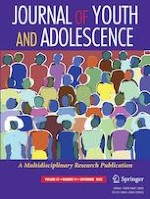27-07-2022 | Empirical Research
Within-Individual Changes in Impulsivity and Sensation Seeking from Childhood to Early Adulthood and Educational Attainment
Gepubliceerd in: Journal of Youth and Adolescence | Uitgave 11/2022
Log in om toegang te krijgenAbstract
Developmental perspectives recognize the importance of the development of impulsivity and sensation seeking for later life educational attainment. The current study examines the effect of developmental trajectories of impulsivity and sensation seeking across adolescence and into young adulthood on educational attainment in adulthood. The study sample consists of N = 5529 youth from a population-based sample from the United States (48.96% female; 46.95% Black or Hispanic). Latent growth curve models are used to examine associations between within-individual changes in impulsivity and sensation seeking and educational attainment. The findings point to the existence of multiple forms of risk taking during different developmental stages, with some offering a positive long-term effect on overall educational attainment.
